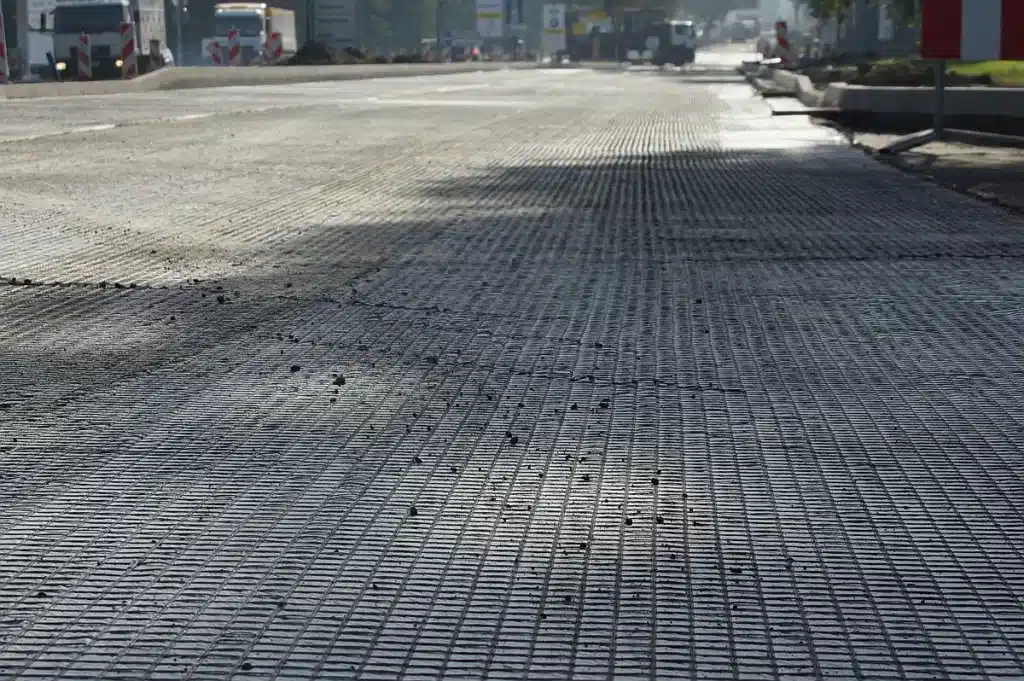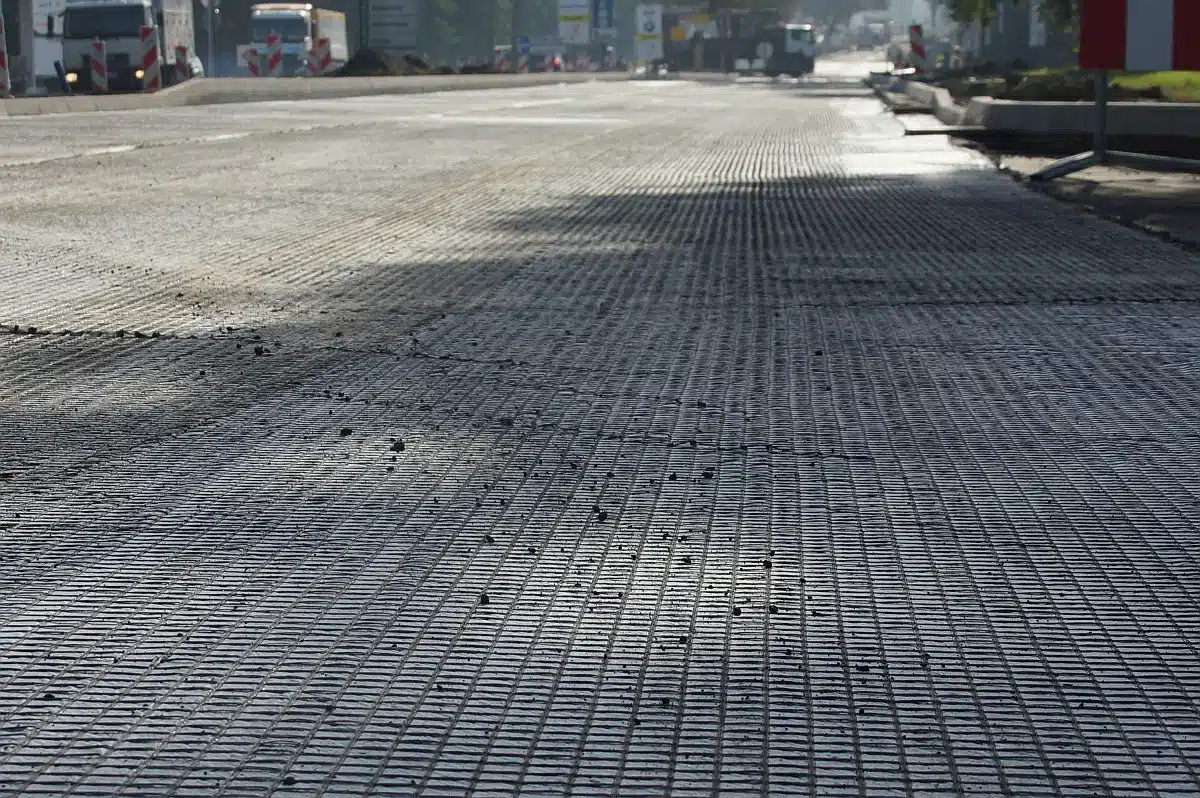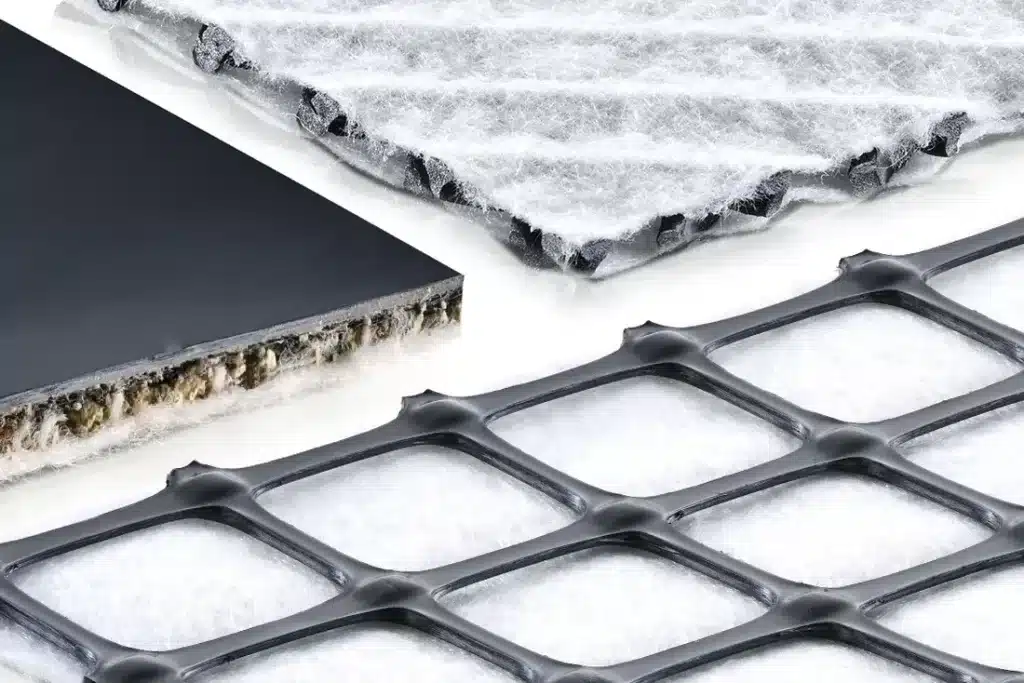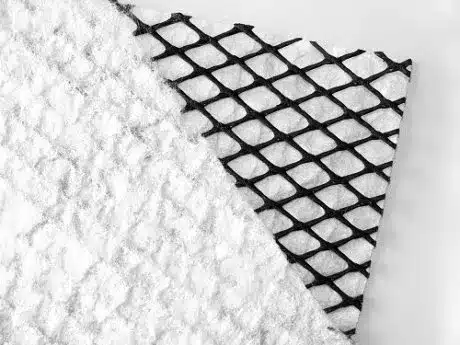+86-159 9860 6917
info@geofantex.com
geofantex@gmail.com
+86-400-8266163-44899
Geocomposite drainage layers play a crucial role in modern civil engineering and construction projects, particularly in managing water effectively. Comprising a combination of materials such as geotextiles and drainage cores, these composite layers are designed to optimize drainage efficiency and durability. This article explores the fundamentals of geocomposite drainage layers, their purpose, properties, and how they differ from conventional geotextiles.

What is a geocomposite drainage layer?
The primary purpose of geocomposite drainage layers is to manage water effectively in various civil engineering applications. They are used to collect and convey both liquids and gases. A geocomposite drainage layer is a specialized material used in construction and civil engineering, typically comprising a combination of geotextiles, drainage cores, and sometimes geomembranes. These layers are specifically engineered to optimize drainage efficiency by effectively channeling water away from structures, preventing water buildup, and reducing hydrostatic pressure.

What is the purpose of geocomposite drainage layers?
The primary purpose of geocomposite drainage layers is to manage water effectively in various civil engineering applications. They are used to enhance drainage efficiency by providing a pathway for water to flow away from structures, reducing the risk of water accumulation and associated damage, for drainage from a basal layer in case of embankments and for drainage behind retaining walls and/or bridge abutments. They also improve soil stability by preventing soil erosion and maintaining soil integrity, which is crucial for the longevity of infrastructure, and reduce hydrostatic pressure by relieving pressure exerted by water on underground structures such as basements and retaining walls, thereby enhancing structural durability.
What is the difference between geotextile and geocomposite?
While both geotextiles and geocomposites are used in civil engineering for drainage purposes, they differ in composition and functionality. A geocomposite consists of a combination of one or more geosynthetics, specifically a geogrid, a geotextile, a geomembrane, and/or a geonet, with another material. Geotextiles are typically single-layer fabrics made from synthetic materials like polypropylene or polyester. Geocomposites, on the other hand, combine these geotextiles with drainage cores (such as perforated pipes or drainage nets) to enhance drainage efficiency. Geotextiles primarily act as filters and separators, whereas geocomposites integrate drainage capabilities, acting as both filters and drainage channels. Geotextiles are used where filtration and separation are key (e.g., road construction), while geocomposites are preferred for drainage-intensive applications (e.g., landfills, sports fields, and underground structures).
What are the properties of geocomposite drainage layers?
Geocomposite drainage layers possess several key properties that make them suitable for various engineering applications, including vertical and horizontal permeable capacity:
- High Flow Capacity: Efficient drainage cores allow for rapid water flow, preventing buildup and ensuring effective drainage with both vertical and horizontal permeable capacity.
- Chemical Resistance: Resistant to chemicals typically found in soils and environments, ensuring long-term durability.
- Durability: Designed to withstand installation stresses and environmental conditions, providing reliable performance over time.
- Customizability: Available in various configurations to meet specific project requirements, including different drainage core types and geotextile compositions, enhancing both vertical and horizontal permeable capacity.
Geocomposite drainage layers represent a significant advancement in civil engineering, offering efficient water management solutions across diverse applications. By combining the filtration properties of geotextiles with effective drainage cores, these layers enhance soil stability, reduce hydrostatic pressure, and extend the lifespan of infrastructure. Understanding their composition, purpose, and unique properties is essential for engineers and contractors seeking sustainable and effective drainage solutions in construction projects.



Get Free Sample
We’ll respond as soon as possible(within 12 hours)






















